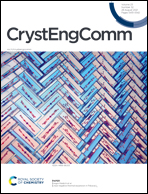Facile synthesis of ultralong hydroxyapatite nanowires using wormlike micelles as soft templates†
Abstract
As a powerful self-assembly process, the soft-template method has attracted considerable scientific interest, but there is a challenge associated with ultralong hydroxyapatite nanowires (HAPNWs) with length of tens of micrometers. In this study, we report a novel three-phase oleic acid–ethanol–water reaction system for synthesizing ultralong HAPNWs by formation of an entangled long wormlike micelle (WLM) structure. The influence of raw materials and initial pH on the HAPNW structure has been studied. Findings showed that a HAPNW structure could only be formed with a design based on the WLM structure at pH 6.5 with oleic acid or sodium oleate as a reactant. The formation mechanism of HAPNWs was proposed and analyzed. A HAPNWs/carbon composite adsorbent was used for the removal of methyl orange from the aqueous phase, showing unique adsorption properties over broad pH and temperature range from 3 to 7 and 20 to 60 °C, even though solid content of HAPNWs in composite adsorbent is only 0.038%. This fundamental research will enrich the knowledge base for controlled synthesis and applications of nanocrystals that rely on ultralong WLMs.

- This article is part of the themed collection: Nanomaterials


 Please wait while we load your content...
Please wait while we load your content...